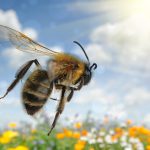 I wrote recently about a project that was aiming to take lessons from the animal kingdom to help develop smarter autonomous vehicles.
I wrote recently about a project that was aiming to take lessons from the animal kingdom to help develop smarter autonomous vehicles.
“Biological systems are the best autonomous systems we know of. A biological system absorbs information from its surroundings via its senses and reacts directly and safely, like an antelope running within its herd, or a hawk pouncing on its prey on the ground. Before humans walked the earth, nature already had a solution, so let’s learn from that,” they say.
Biologically smart drones
Now, researchers from the University of Queensland are looking to the natural world to help inspire the next generation of drones.
They are examining the flying habits and techniques of bees and budgerigars, before then looking to see if these findings can be applied to the way drones fly and navigate.
“We study how small airborne creatures such as bees and birds use their vision to avoid collisions with obstacles, fly safely through narrow passages, control their height above the ground and more. We then use biologically-inspired principles to design novel vision systems and algorithms for the guidance of UAVs,” they explain.
Whilst it may seem as though there is little commonality between insects and birds, it turns out that the visual processing capabilities of both animals is key to how they fly. This is especially important in the case of bees as their brains are much less powerful than human brains, yet they are incredibly potent in their flying capabilities.
Taking flight
The specific animals were selected because they are relatively easy to monitor.
“These animals are clever, can be easily trained, and possess sophisticated visual systems that are not unlike those of our own.” Regarding other benefits of the research, he says: “The study of their behaviour could also reveal some of the basic principles of visual guidance in a number of organisms including humans,” the researchers explain.
The team believe that by honing in on what make animals so effective at flying and navigating, it will lead to significant improvements in the way drones navigate themselves. Indeed, the researchers believe that the advances will eventually enable drones to fly without requiring either GPS or radar based support, thus opening up novel applications in areas ranging from planetary exploration to search and rescue operations.